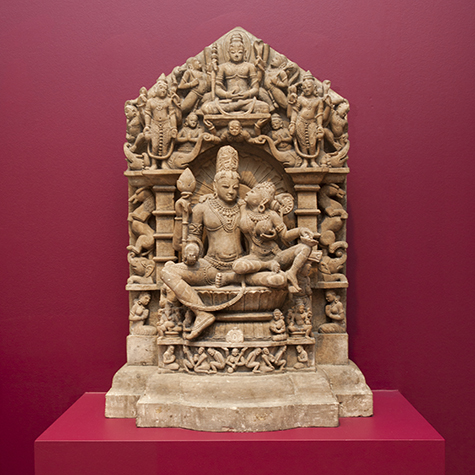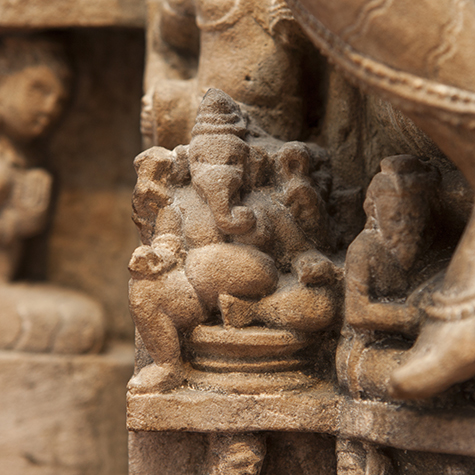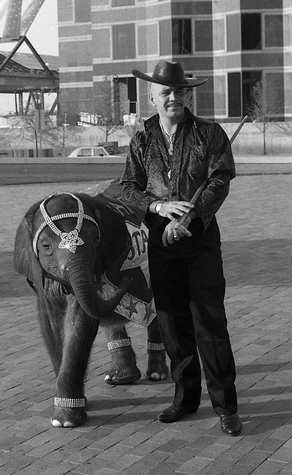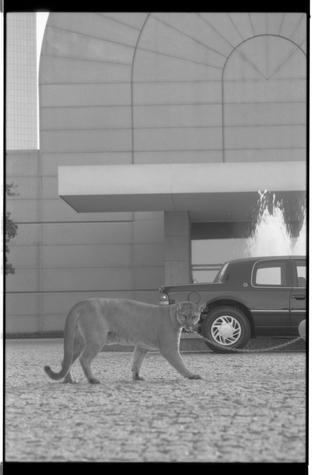
Uma-Maheshvara, central India, likely late 11th to 12th century, buff sandstone, Intended bequest of David T. Owsley
Dr. Anne Bromberg, The Cecil and Ida Green Curator of Ancient and Asian Art at the DMA, can always be counted on to discuss the representation of love in various forms in the works in the DMA’s collection. We asked her to pick out a work on view for a special Valentine’s Day post:
In this sumptuous temple relief, the great Hindu god Shiva embraces his wife Parvati in a sensuous and romantic way. As both gods are deities of fertility, they are shown as almost naked and with beautifully modeled bodies. By their feet are their two sons, the elephant-headed god Ganesha and Skanda, a war god. Over the couple is a scene with Shiva in his other aspect, as the great god of yogic meditation. According to a Hindu text, Parvati longed for a baby after she and Shiva married, but he remained stubbornly ascetic. Finally, the beautiful Parvati said, “Alright, just give me a child and you can go on being the divine yoga master.” So he did, but since Shiva is the god of life, death, and rebirth, it wasn’t that simple. When Shiva found the child Ganesha barring him from Parvati when she was bathing, he cut off his son’s head. Then, moved by Pavati’s despair, he said that he would restore the boy with the head of the first person he saw, which turned out to be an elephant. Elephant-headed Ganesha became the god who removes obstacles from people’s path and gives them prosperity. He is the most popular god in India today. So the tumultuous story has a happy ending, and Shiva and Parvati are cuddly symbols of undying love.

Detail of Ganesha
Visit this work, and many other works that embody love, in the DMA’s collection galleries for free this Valentine’s Day.
Anne Bromberg is The Cecil and Ida Green Curator of Ancient and Asian Art at the DMA.





